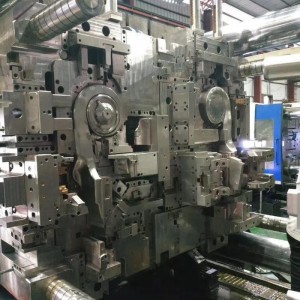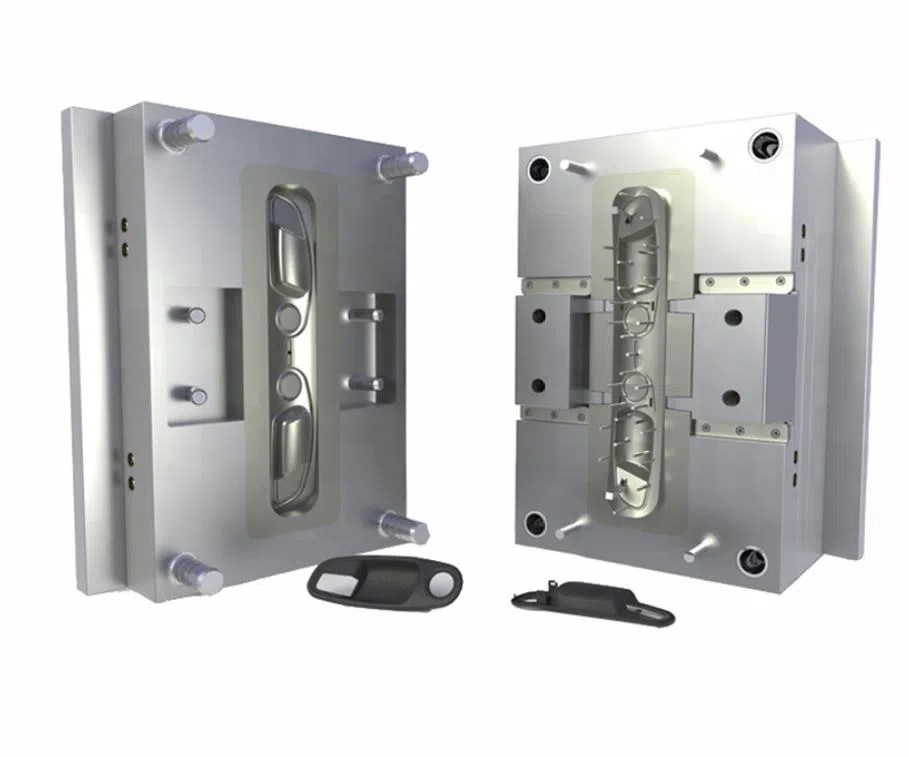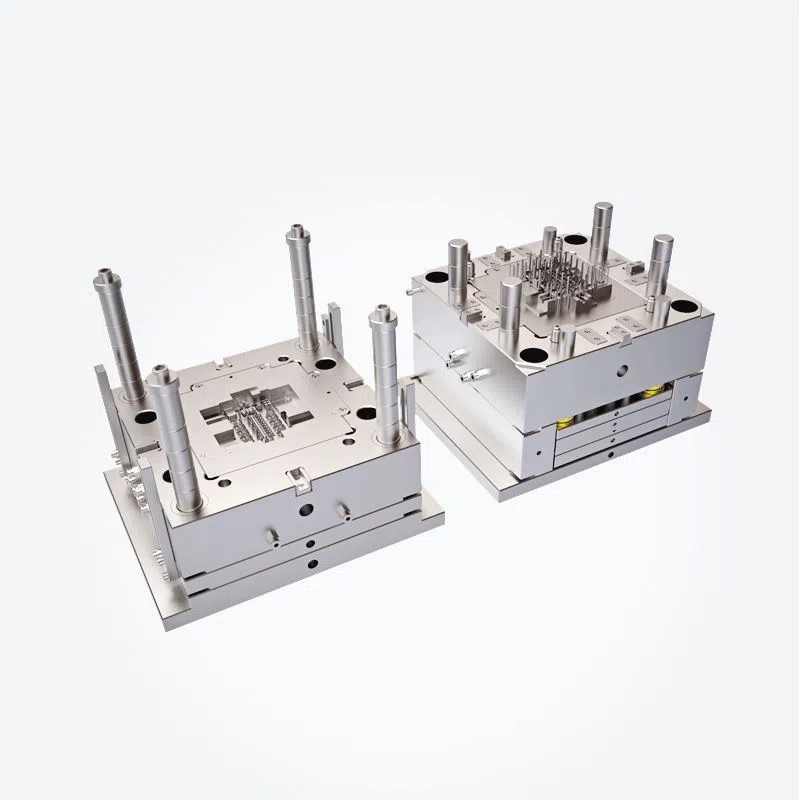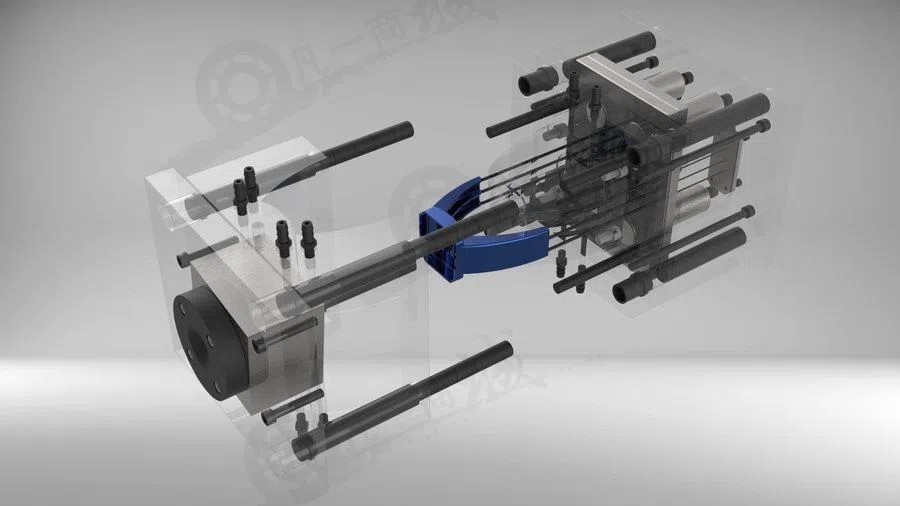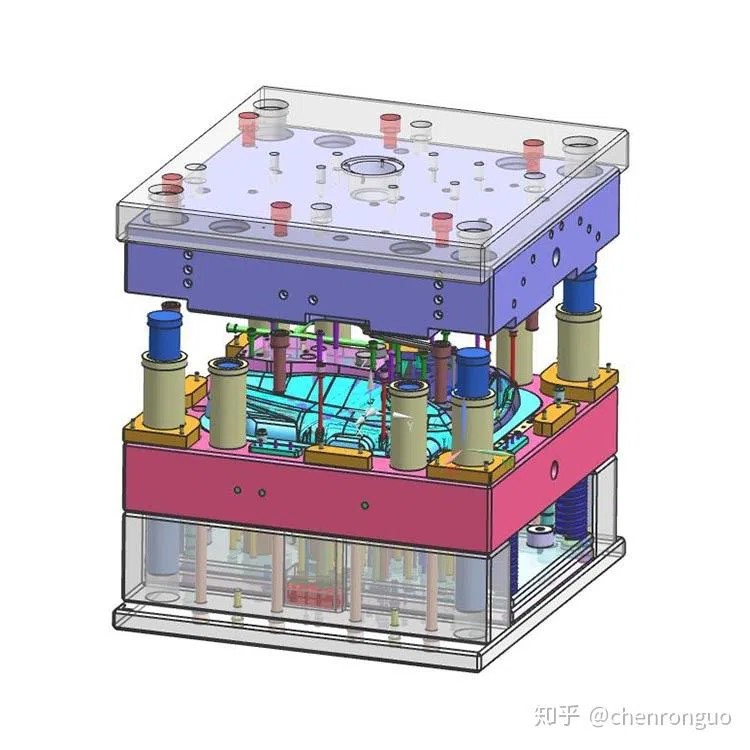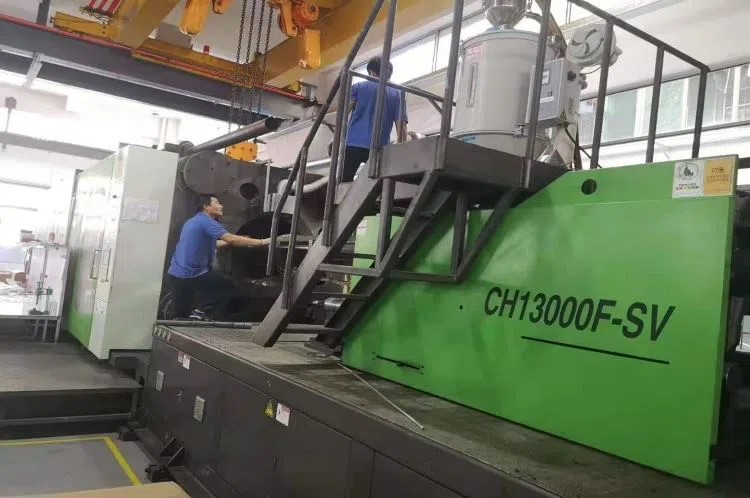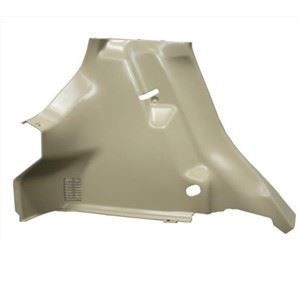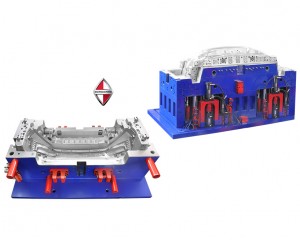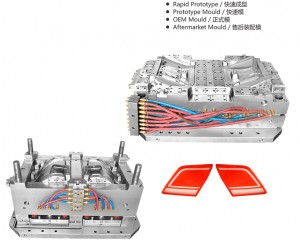China Injection Mold
Short Description:
Injection mold is a tool for producing plastic products;It is also the tool that gives plastic its complete structure and precise size.Injection molding is a process used in mass production of parts with complex shapes.Specifically refers to the plastic melted by heat injection molding machine…
Description
Injection mold is a tool for producing plastic products;It is also the tool that gives plastic its complete structure and precise size.Injection molding is a process used in mass production of parts with complex shapes.Specifically refers to the plastic melted by heat injection molding machine high pressure into the mold cavity, after cooling and solidification, get the formed products.
Chinese name
Injection molding
Foreign names
sino injection mold
classification
Thermosetting and thermoplasticity
The alias
Injection mold
application
Industrial sectors
The basic classification
Auto mould
Injection molds can be divided into thermosetting plastic moulds and thermoplastic moulds according to their forming characteristics.According to the forming process, it can be divided into transmission mold, blow mold, casting mold, hot forming mold, hot pressing mold (pressure molding mold), injection mold, etc., among which the hot pressing mold can be divided into overflow type, half overflow type, and no overflow type three kinds, and the injection mold can be divided into cold runner mold and hot runner mold two kinds by the gating system;According to the loading and unloading mode can be divided into two kind of way, mobile and fixed
Although the structure of the mold may vary due to the variety and performance of plastic, the shape and structure of plastic products and the type of injection machine, the basic structure is the same.The mold is mainly composed of gating system, temperature control system, forming parts and structural parts.Among them, the gating system and molding parts are directly in contact with plastic parts, and change with plastic and products, is the most complex in the plastic mold, the largest change, requiring the highest processing smoothness and precision of the part.
The injection mold is composed of two parts: moving mold and fixed mold. The moving mold is installed on the moving template of the injection molding machine, and the fixed mold is installed on the fixed template of the injection molding machine.During injection molding, the moving mold and the fixed mold are closed to form the gating system and cavity. When the mold is opened, the moving mold and the fixed mold are separated to remove the plastic products.In order to reduce the heavy mold design and manufacturing workload, injection mold mostly adopts the standard mold frame.
Gating system
Gating system refers to the flow passage part before the plastic enters the mold cavity from the nozzle, including the main channel, the cold material hole, the shunt channel and the gate.
Gating system is also known as the flow channel system, it is the plastic melt from the injector nozzle to the cavity of a group of feed channels, usually by the main channel, shunt channel, gate and cold hole composition.It is directly related to the molding quality of plastic products and production efficiency.
The mainstream way
It is a passage in the mold that connects the injector nozzle of the injection molding machine to the shunt passage or cavity.The top of the main channel is concave to connect with the nozzle.The inlet diameter of the main channel should be slightly larger than the nozzle diameter (0.8mm) to avoid overflow, and to prevent the blocking of the two due to incorrect connection.Imported diameter according to the size of the product, generally 4-8mm.The diameter of the main channel should be expanded inward at an Angle of 3° to 5° to facilitate the demoulding of the tauntages in the channel.
Cold material point
It is a hole at the end of the main runner to trap the cold material produced between two injections at the nozzle end to prevent blockage of the shunt or gate.If the cold material once mixed into the cavity, it is easy to produce internal stress in the product.The diameter of the cold material hole is about 8-10mm and the depth is 6mm.In order to facilitate demoulding, the bottom is often borne by the demoulding rod.The top of the demoulding rod should be designed as a zigzag hook shape or a sagging groove, so that the main tautings can be pulled out smoothly when demoulding.
Shunt way
It is a channel connecting the main channel and each cavity in the multi-slot die.In order to fill each cavity with molten material at the same speed, the distributary channels should be arranged symmetrically and equidistantly on the mould.The shape and size of the shunt section have an effect on the flow of the plastic melt, the demoulding of the product and the difficulty of the mold manufacturing.If the flow of the same amount of material, the circular cross section of the channel resistance is the least.However, because the cylindrical runner is smaller than the surface, it is unfavorable to the cooling of the warp, and the warp must be set on the two halves of the die, which is both laborious and difficult to align.Therefore, a trapezoidal or semicircular section is often used, and is set on a half of the mold with a demoulding rod.The surface of the runner must be polished to reduce flow resistance and provide a faster filling speed.The size of the runner depends on the type of plastic, the size and thickness of the product.For most thermoplastics, the width of the shunt cross section is not more than 8mm, the very large can be up to 10-12mm, the very small 2-3mm.On the premise of meeting the needs, the cross-sectional area should be reduced as far as possible in order to increase the debris in the shunt and prolong the cooling time.
gate
It is the channel connecting the main channel (or shunt channel) and the cavity.The cross-sectional area of a channel can be equal to that of a main channel (or split channel), but is usually reduced.So it's the smallest cross-sectional area in the entire flow system.The shape and size of gate have great influence on product quality.
The function of the gate is:
A. Control the material flow speed:
B, in the injection can prevent the reverse flow due to the early coagulation of the molten material stored in this part:
C. Make the molten material through be subjected to strong shear and increase the temperature, so as to reduce the apparent viscosity and improve the liquidity:
D. Easy to separate products from the flow system.The design of the gate shape, size, and location depends on the nature of the plastic, the size and structure of the product.The section shape of the general gate is rectangular or circular, and the cross-sectional area should be small and the length should be short. This is not only based on the above effect, but also because it is easier for the small gate to become large, while it is difficult for the large gate to shrink.The gate location should be generally selected in the thickest products and do not affect the appearance of the place.The gate size should be designed to take into account the nature of the plastic melt.Cavity is the space in a mold where plastic products are formed.The components used to form the cavity are collectively referred to as forming parts.Each molding part often has a special name.The molding parts that constitute the shape of the product are called concave die (also known as the negative die), which constitute the internal shape of the product
(such as holes, grooves, etc.) called the core or punch (also known as the male die).Design molding parts, first of all, according to the performance of plastic products, geometric shape, dimensional tolerance and use requirements to determine the overall structure of the cavity.Secondly, according to the determined structure, the parting surface, the location of the gate and the vent and the demoulding mode are selected.Finally, according to the size of the control products for the design of each part and determine the combination between the parts.Plastic melt into the cavity has a very high pressure, so the molding parts to be reasonable material selection and strength and stiffness of the check.In order to ensure the smooth and beautiful surface of plastic products and easy demoulding, the roughness of the surface in contact with plastic shall be Ra>0.32um, and corrosion resistant.Molded parts are generally heat treated to improve their hardness, and are made of corrosion-resistant steel.
The thermal control system
In order to meet the injection process of mold temperature requirements, it is necessary to have a temperature control system to adjust the temperature of the mold.For thermoplastic injection mold, the main design is the cooling system to cool the mold.The common method for mold cooling is to open a cooling water channel in the mold and take away the heat of the mold by circulating cooling water.In addition to using hot water or steam in the cooling water channel, electric heating elements can also be installed inside and around the mold.
Molding parts
Molded parts are all kinds of parts that make up the shape of products, including moving die, fixed die and cavity, core, molding rod and exhaust port, etc.The forming part is composed of a core and a concave die.The core forms the inner surface of the product, and the die forms the outer surface of the product.The core and cavity form the cavity of the mold after the mold is closed.According to the process and manufacturing requirements, sometimes the core and concave die by a number of block combination, sometimes made into a whole, only in the easily damaged, difficult to process parts of the use of inserts.
vent
It is a kind of groove shaped air outlet opened in the mold, used to discharge the original and the gas brought by the molten material.When the molten material is injected into the mold cavity, the original air in the mold cavity and the gas brought by the melt must be discharged to the mold through the exhaust port at the end of the material flow, otherwise it will make the products with air holes, poor connection, fill the mold is not satisfied, and even the accumulated air will burn the products due to high temperature caused by compression.In general, the exhaust hole can be located at the end of the flow of molten material in the mold cavity, or on the parting surface of the mold.The latter is a shallow groove 0.03-0.2mm deep and 1.5-6mm wide set on one side of the concave die.During the injection, not a lot of molten material seeps out of the vent, because the molten material will cool and solidify there, blocking the passage.The opening position of the exhaust port should not face the operator to prevent the accidental ejection of molten material.In addition, the fit gap between ejector rod and ejector hole, and the fit gap between ejector block and mold core can be used to exhaust gas.
Structural parts
It refers to the composition of the mold structure of the various parts, including: guidance, demoulding, core pulling and parting of various parts.Such as front and back splints, front and back buckle formwork, pressure plate, pressure column, guide column, off formwork, stripping rod and return rod.
Injection mold Injection mold 13 pieces of injection mold
Injection mold
1. Guide parts
In order to ensure that the moving die and the fixed die can be accurately aligned when the die is closed, the guide part must be set in the die.In the injection mold, four groups of guide posts and guide sleeves are usually used to form the guide parts. Sometimes, the inner and outer cones that match each other are set on the moving mold and the fixed mold to assist the positioning.
2. Launch mechanism
In the mold opening process, a pushout mechanism is required to push or pull out the plastic products and the condensate in the flow channel.Push out the retaining plate and the pushing plate to clamp the push rod.In the push rod is generally also fixed with a reset rod, the reset rod in the moving, fixed mold closing mold so that the push plate reset.
3. Side core-pulling mechanism
Some plastic products with side concave or side hole must be lateral parting before being pushed out. After pulling out the side core, the mold can be released smoothly. At this time, a side core-pulling mechanism needs to be set in the mold.
The injection device
The injection device is a device that makes the resin material melt after injection into the mold.As shown in the figure, the resin is squeezed into the barrel from the head, and the melt is transported to the front end of the barrel through the rotation of the screw.In the process, under the action of heater heating makes the resin material is heated inside the barrel, screw in the shear stress under the action of making resin molten state, will be the equivalent of FRP products and the mainstream way, distributary channel of molten resin in the front end of the barrel (called measurement), the material of the screw into the cavity.When the molten resin flows in the mold, the moving speed of the screw must be controlled (the injection speed), and after the resin is filled with the mold cavity, the pressure (retaining pressure) is used to control.When the screw position and injection pressure reach a certain value, we can switch the speed control to the pressure control.

